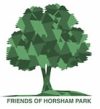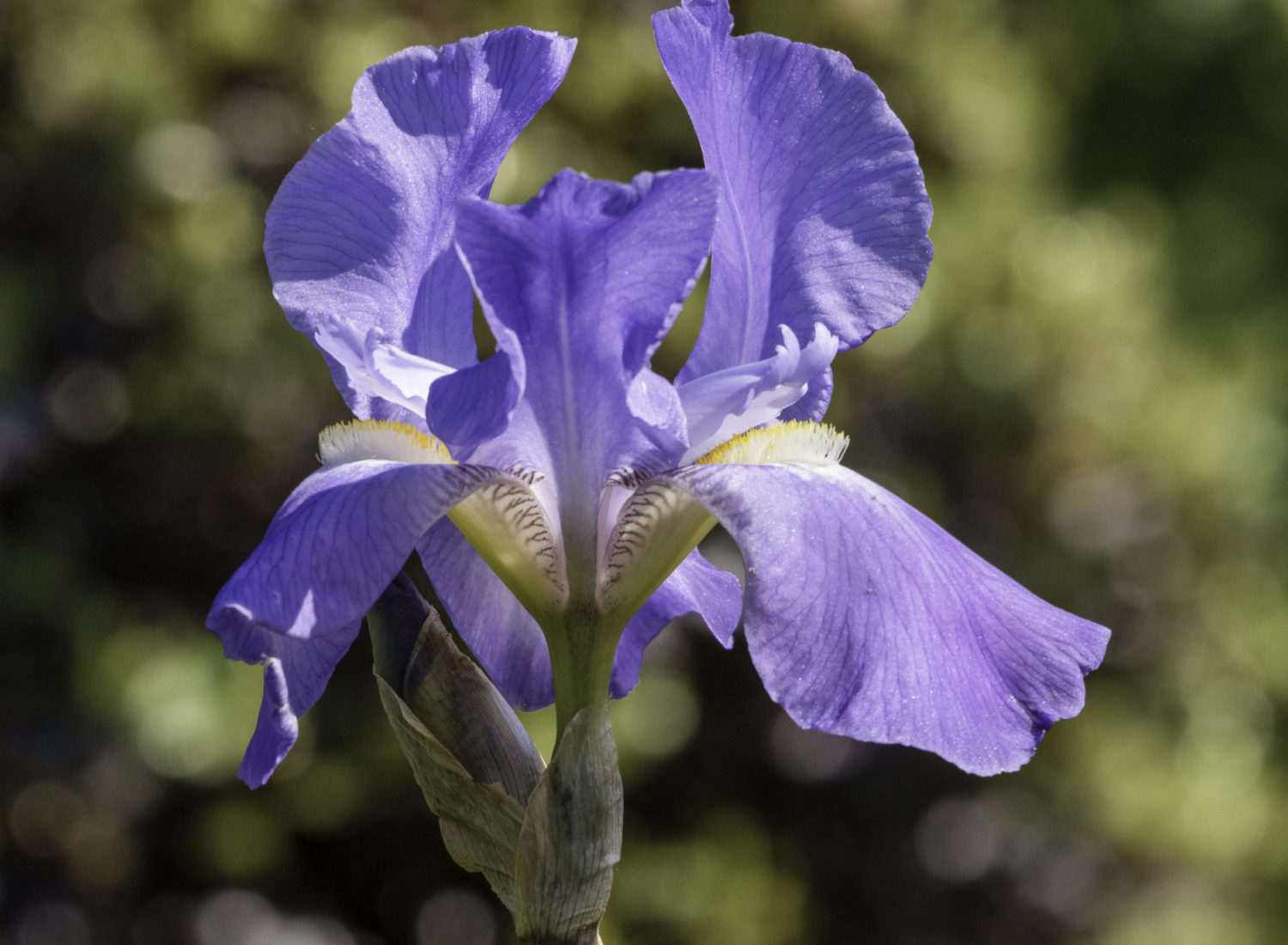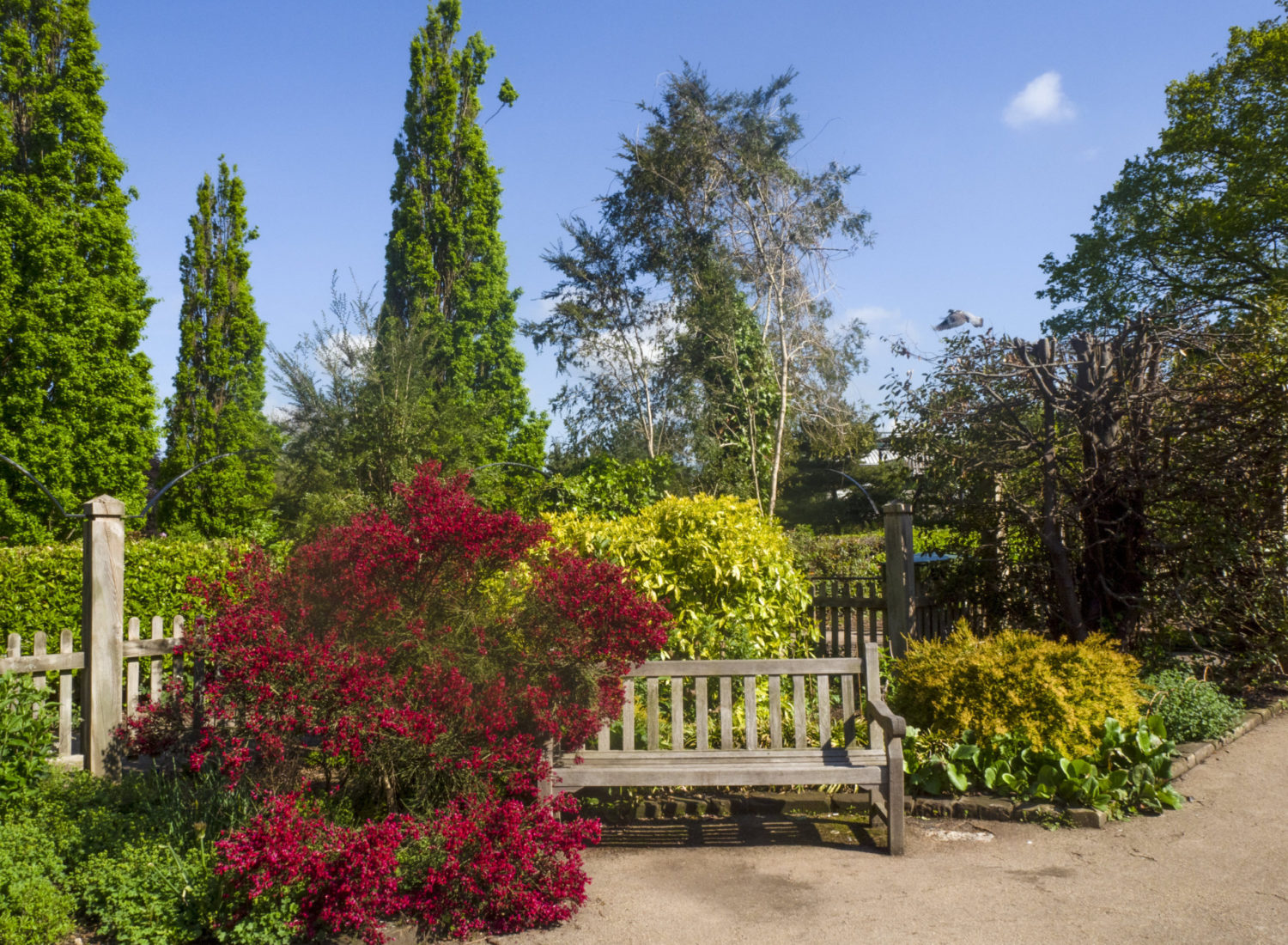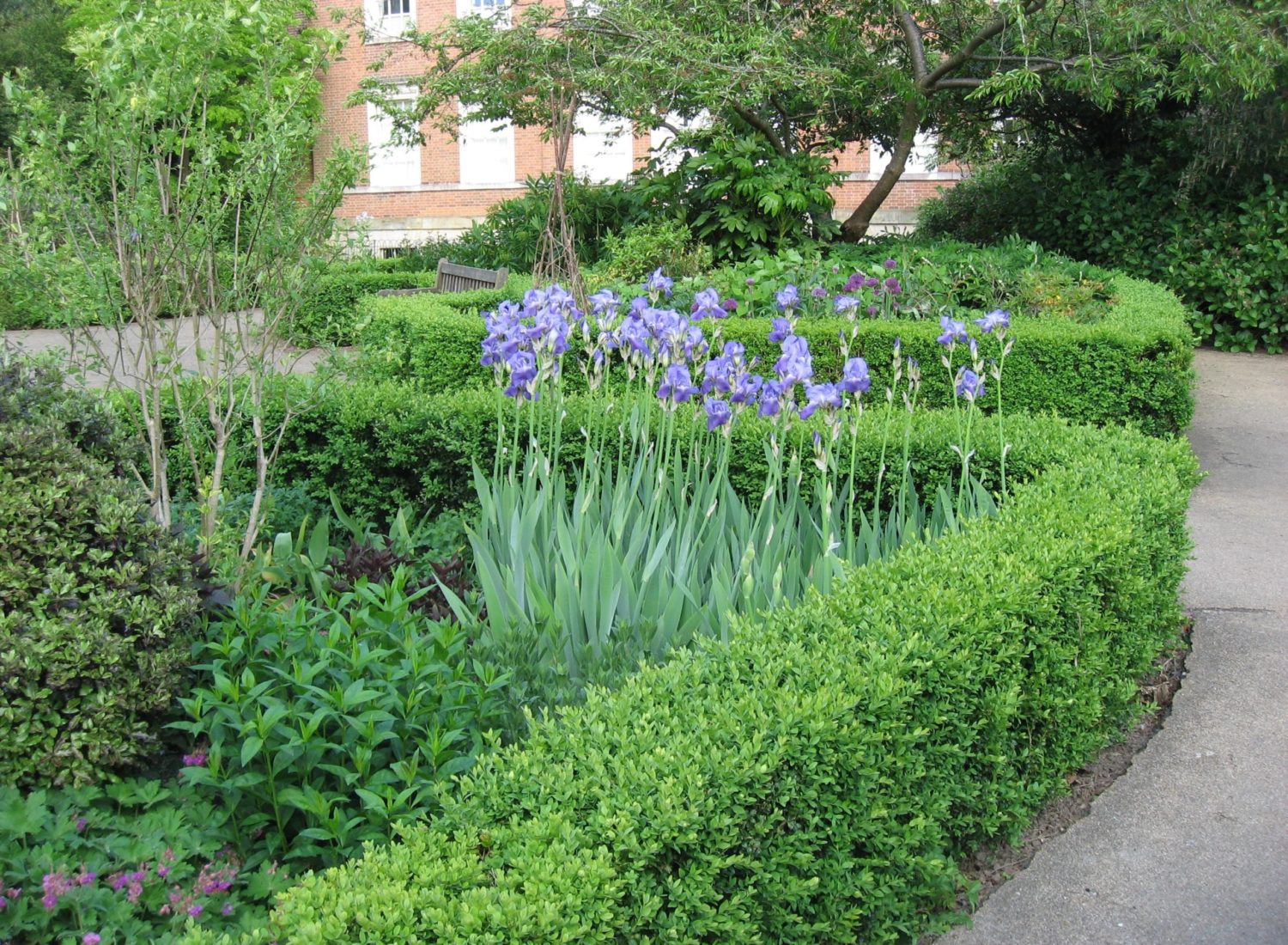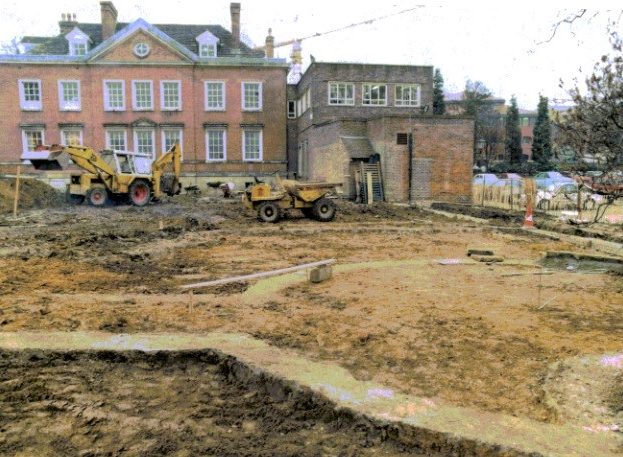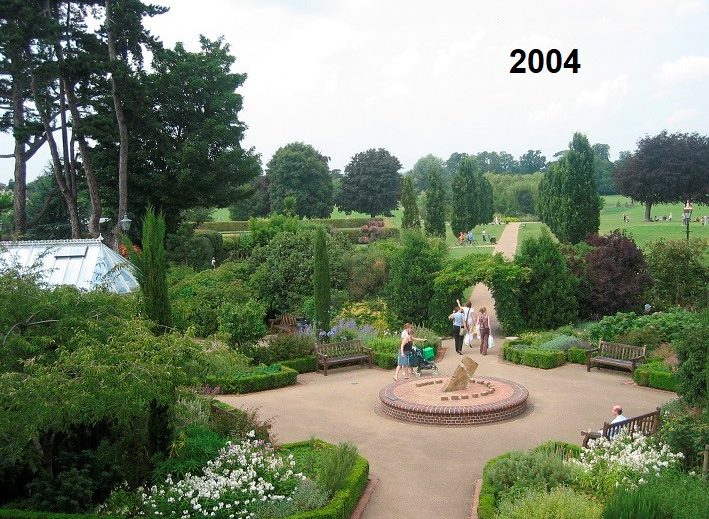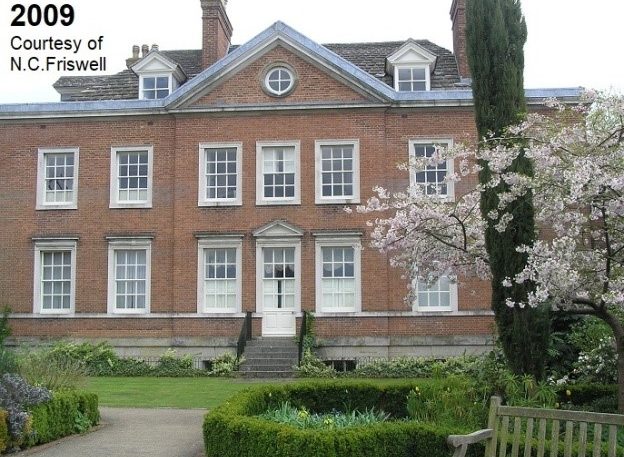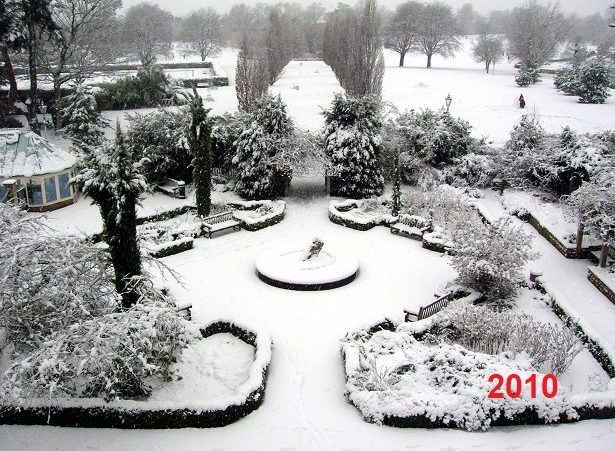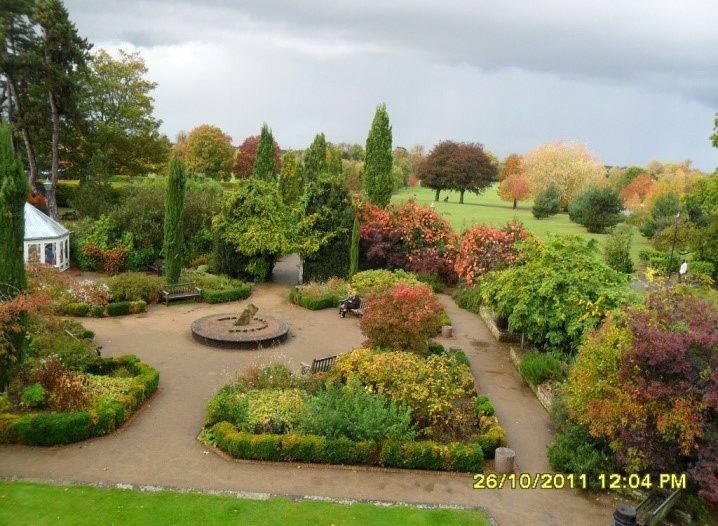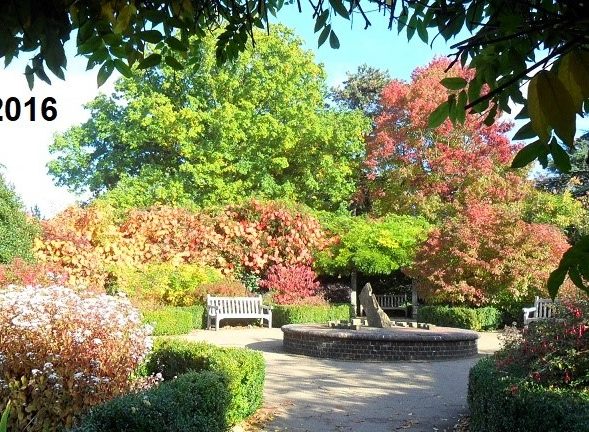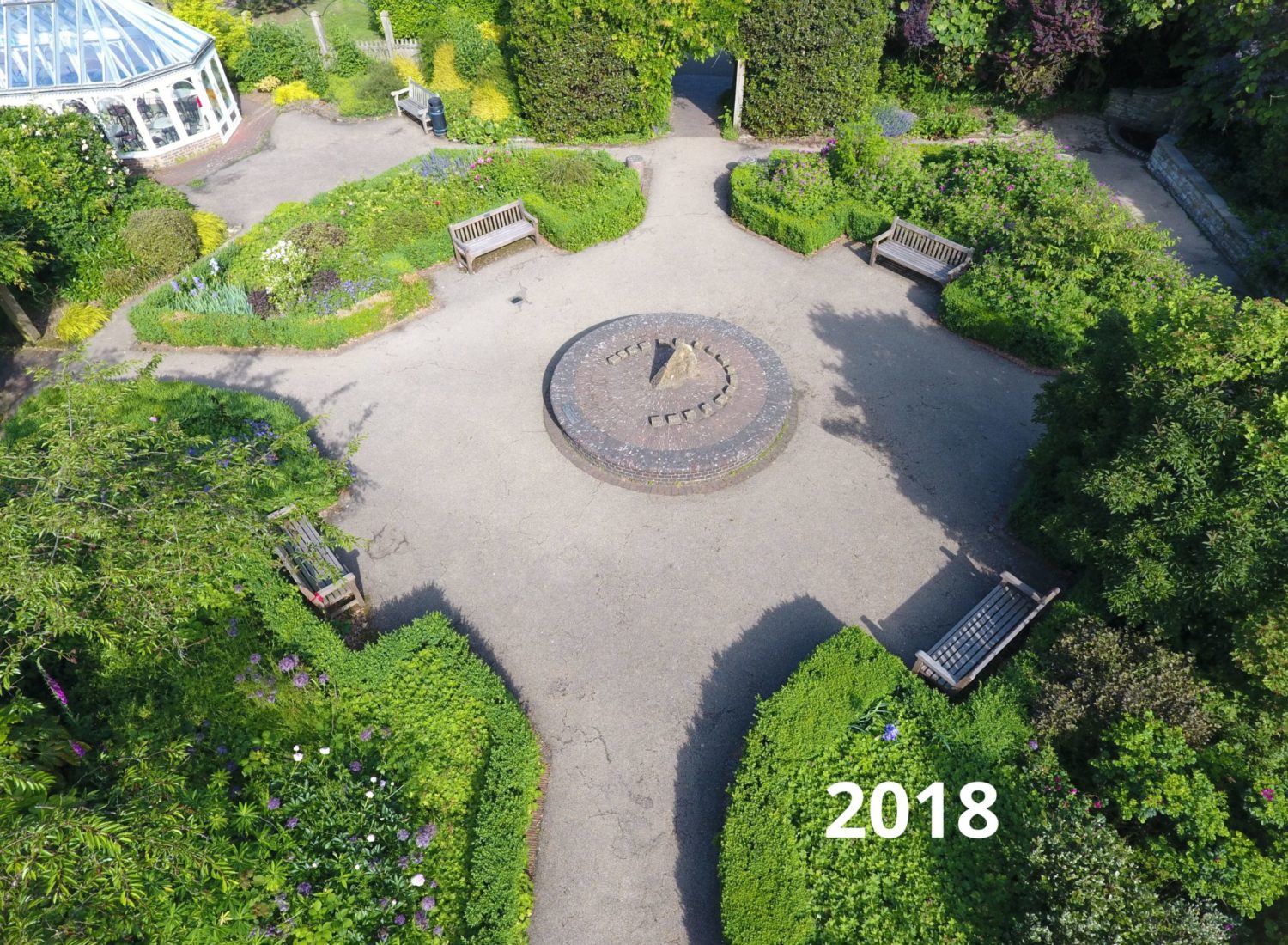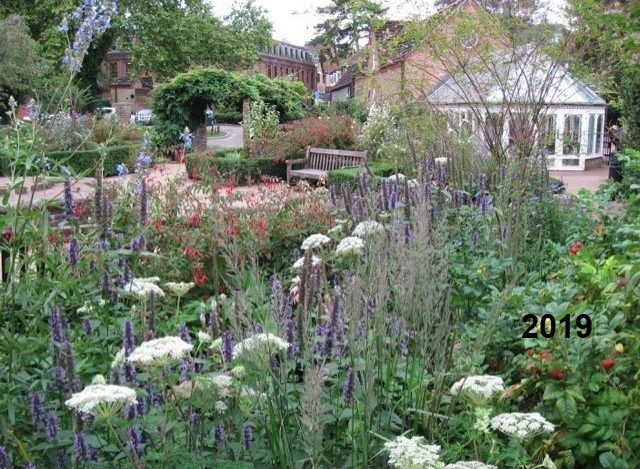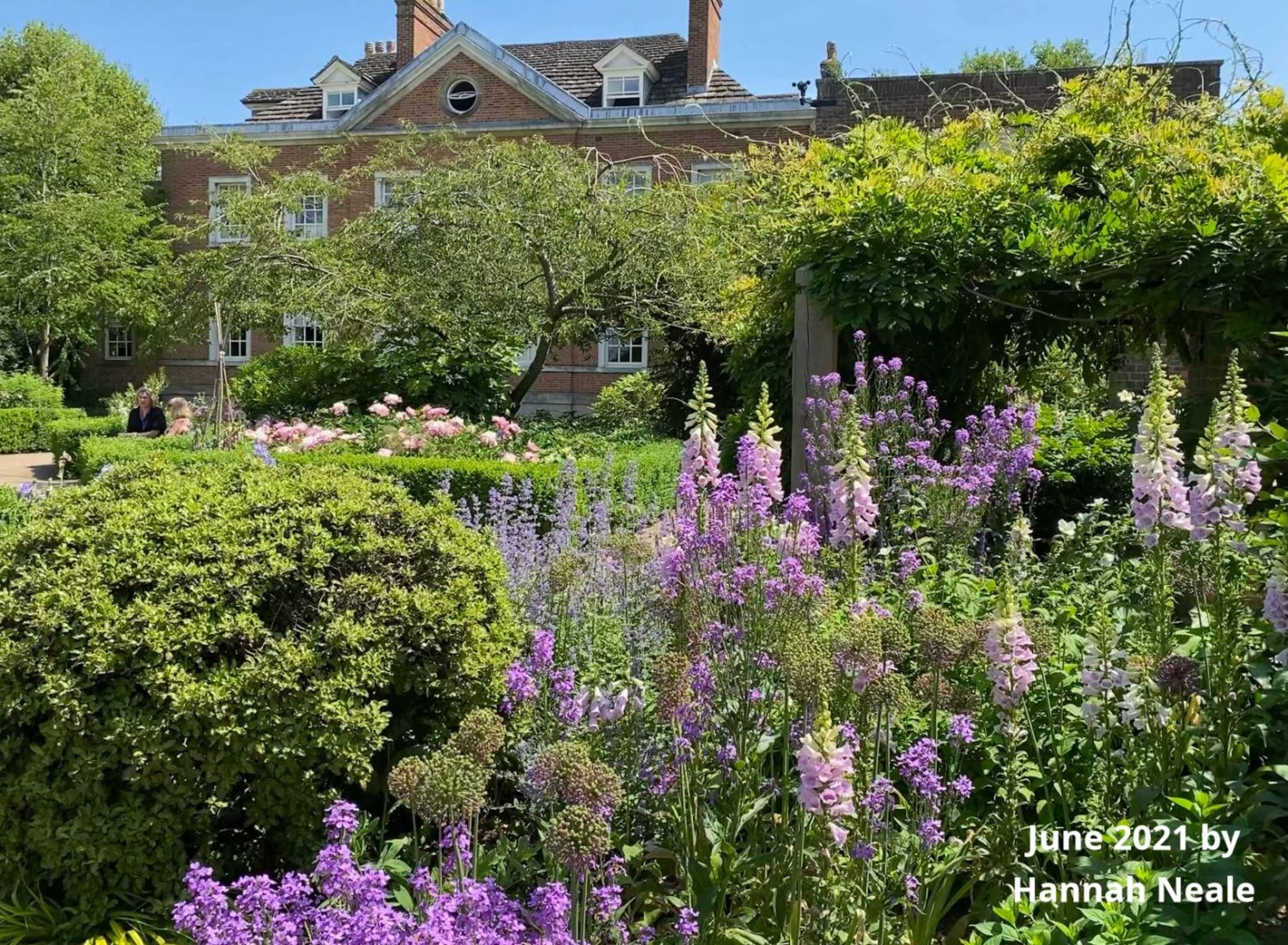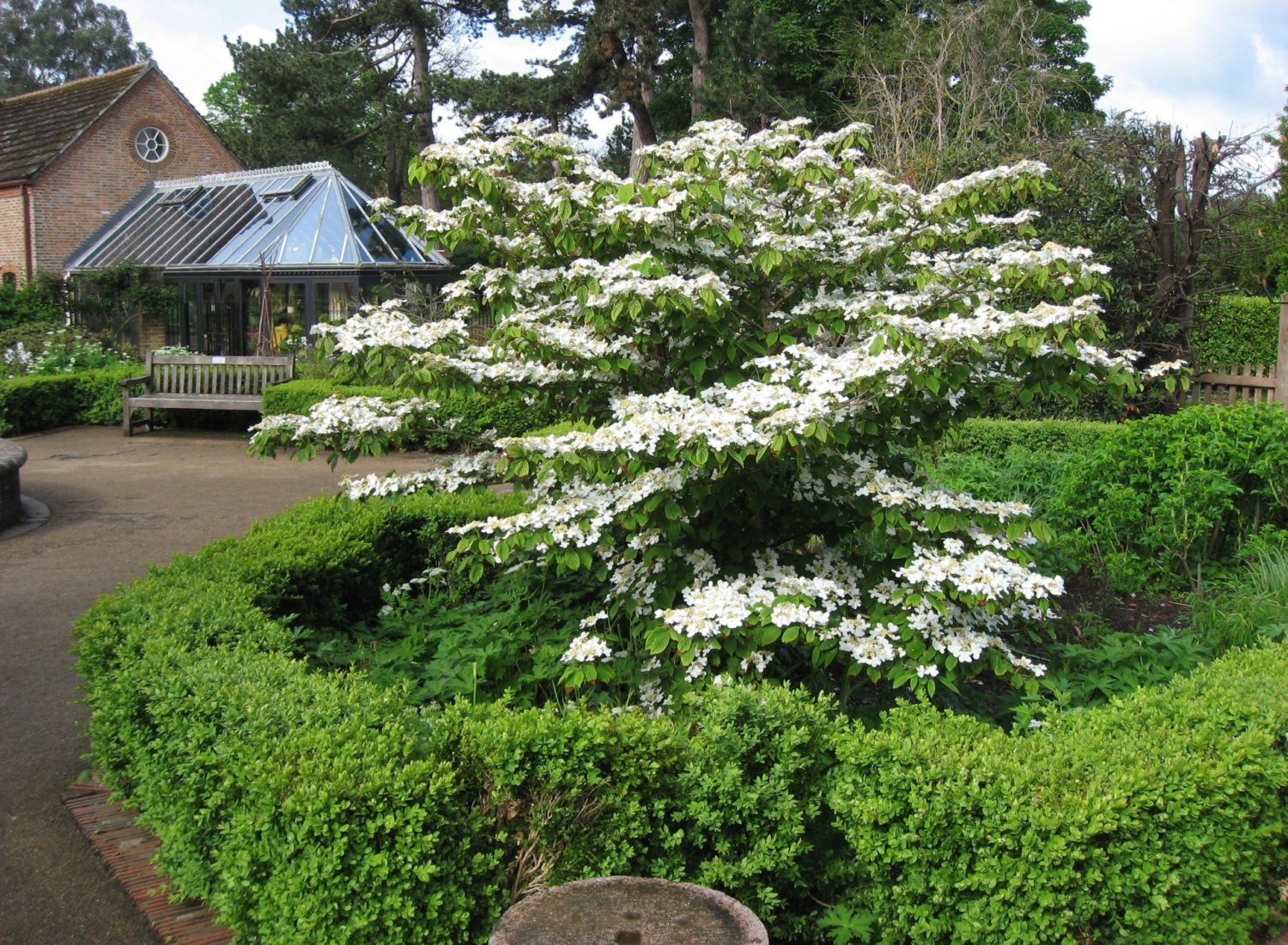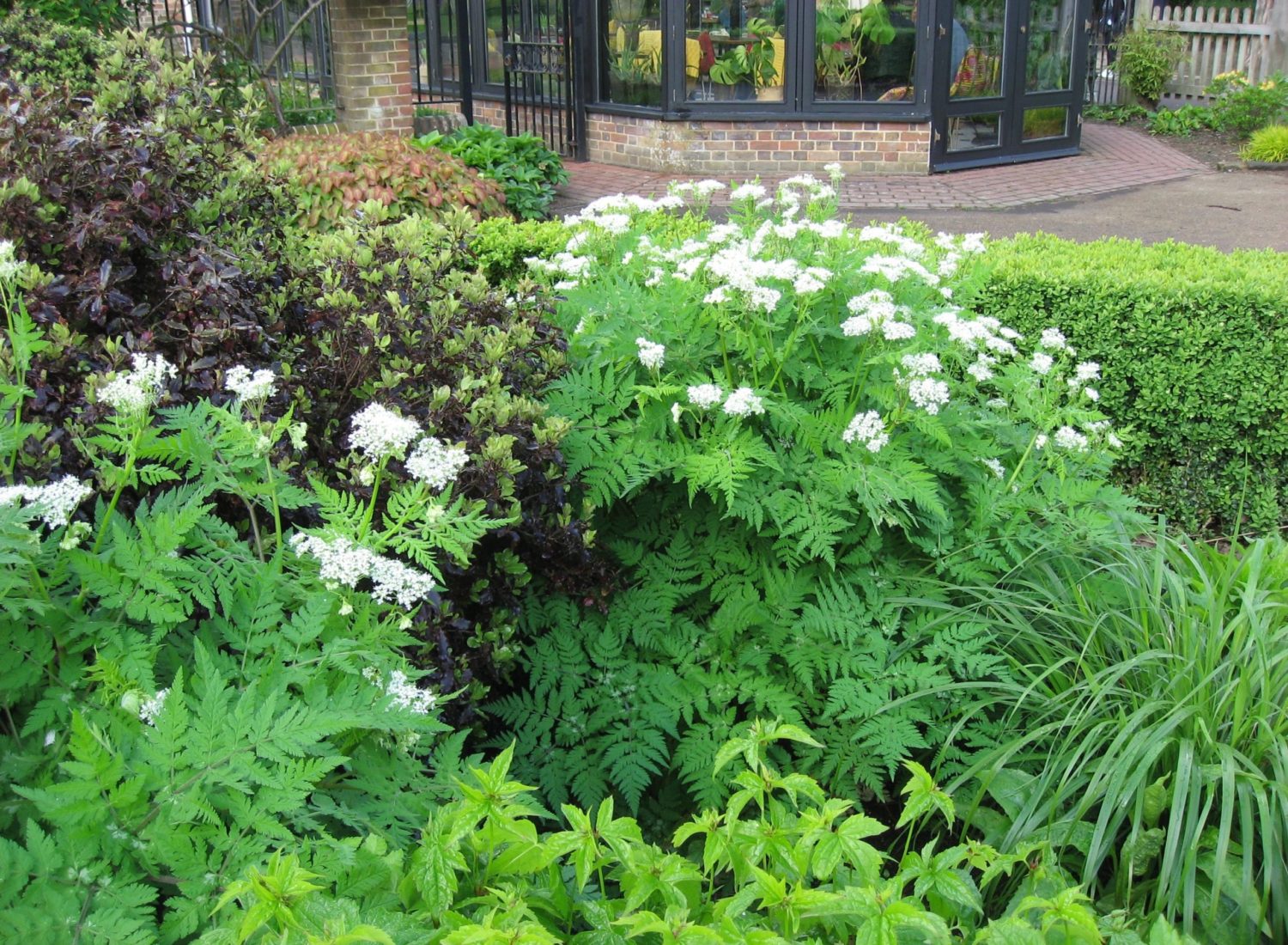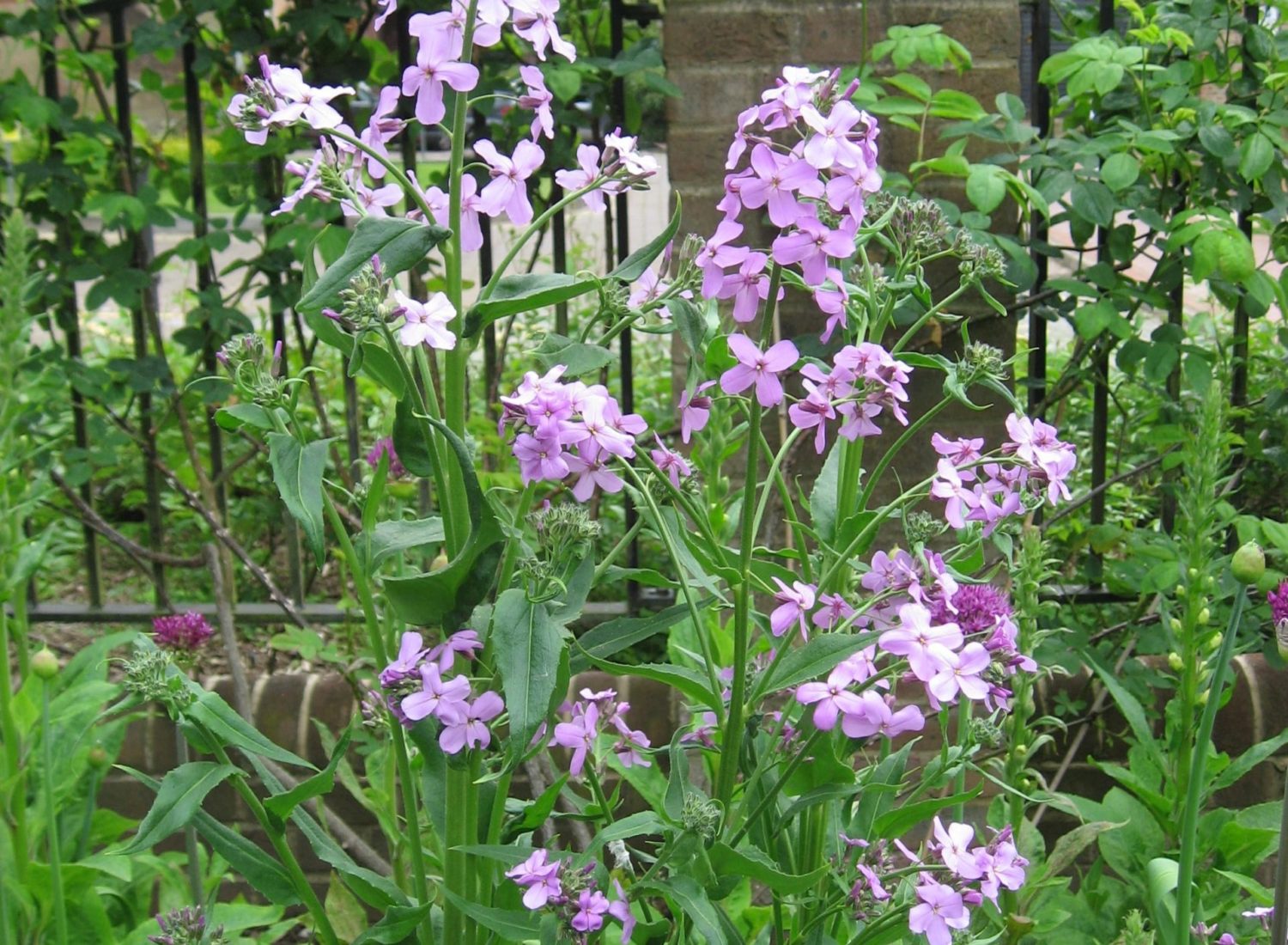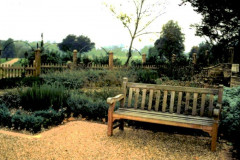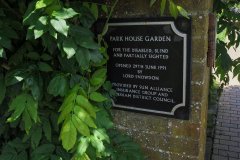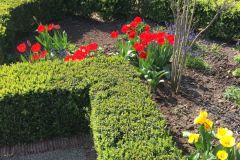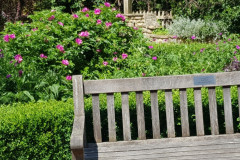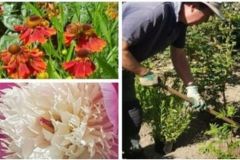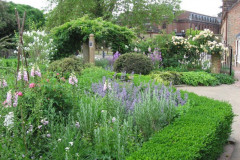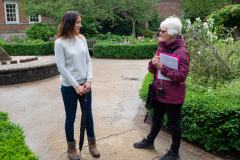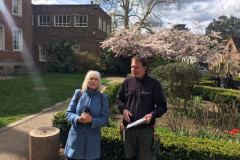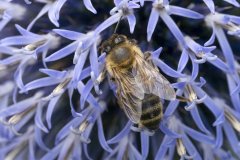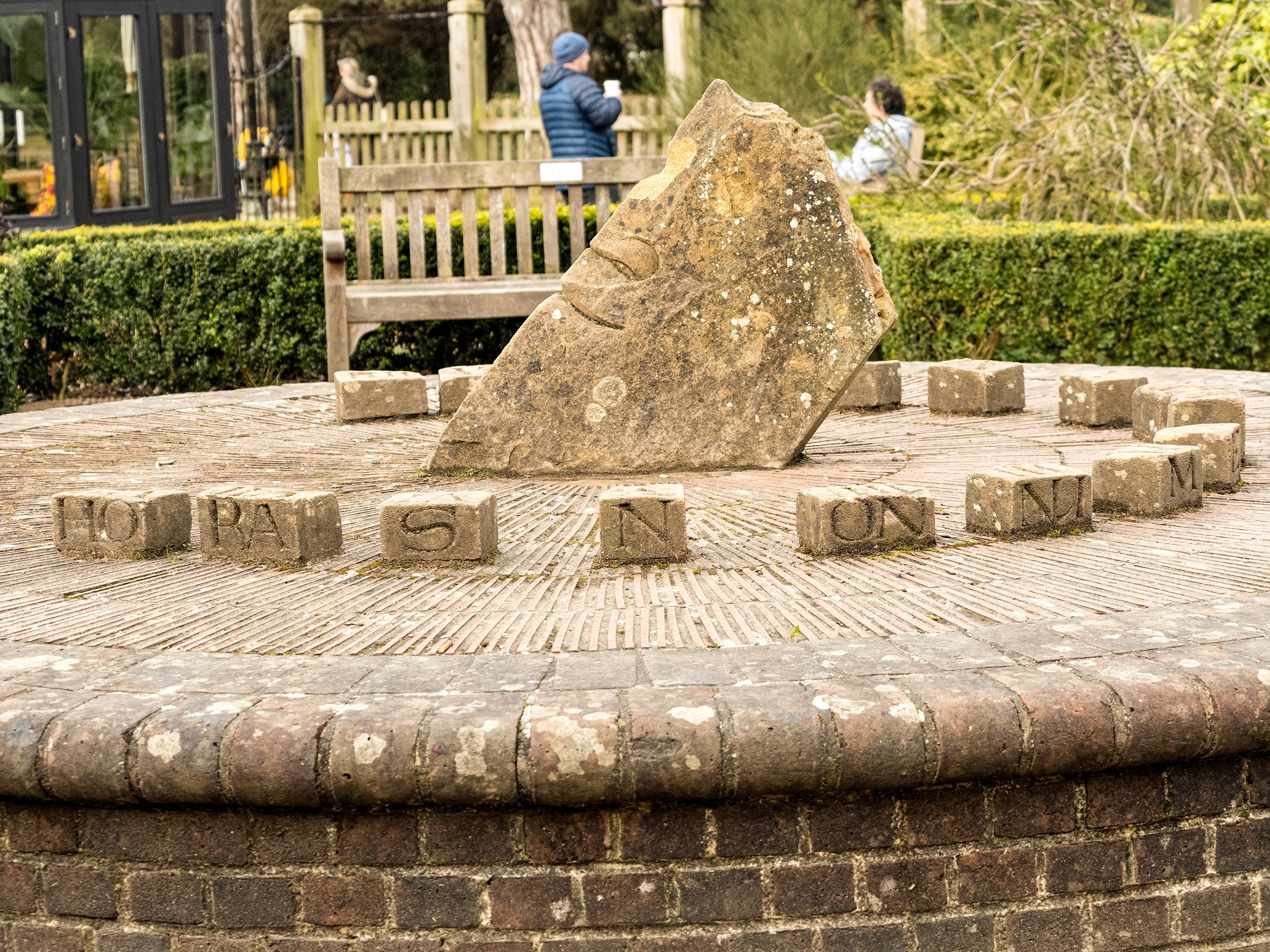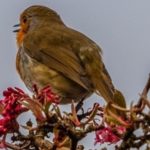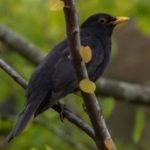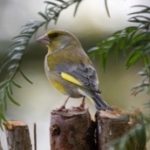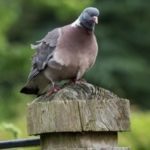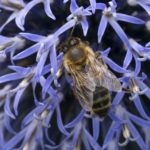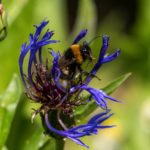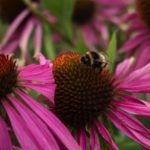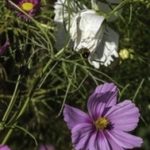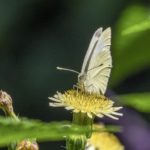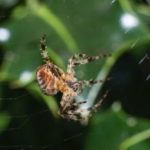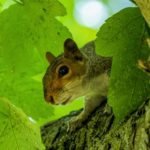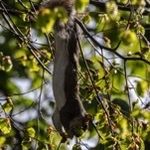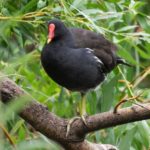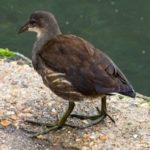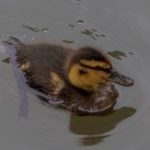RSA gave us a grant of £5,000 to help with the restoration of the garden and celebrate its 30th anniversary this year. RSA gave generous sponsorship towards the creation of the garden 30 years ago. Part of our grant will be used to spruce up the Sungod sculpture. The garden was designed for everyone but with particular attention to the needs of those with mobility or sight issues. We would like to build on the idea of inclusivity.
Since we won the RSA grant we’ve been busy planning the 30th anniversary project. We launched this as ‘Sense the Change’.
We have worked with Horsham District Council and community groups on a number of improvements – some for this year and some for the longer term – all aiming to continue the garden’s heritage of inclusivity and appeal to the senses. You will have noticed that Horsham District Council opened up the garden by cutting back the yew hedge and pruning the wisteria. This will allow us to do some replanting including for winter interest, for drought tolerance and for pollinators. Some of the landscape features will be repaired and we’re planning additional seating.
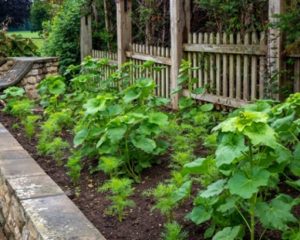 The first change you will have sensed is that some old plants have been removed by the volunteers and new replanting has happened. All the hollyhocks and cosmos grown and planted by the Friends are doing well.
The first change you will have sensed is that some old plants have been removed by the volunteers and new replanting has happened. All the hollyhocks and cosmos grown and planted by the Friends are doing well.
We are delighted that we have also been awarded two more grants for the two beds where we have planted hollyhocks, cosmos and zinnia for a summer display. The original planting had outgrown the space, there were gaps where shrubs had died and there were lots of brambles and weeds that had taken over. In the Autumn:
* The raised bed will show case drought resistant planting and is funded by a Climate Change grant from Horsham District Council.
* The fountain bed will be planted up for year-round interest with a grant from the Sussex Gardens Trust.
In both cases the planting will still focus on the sensory theme for the garden and be pollinator friendly.
Thank you to our latest sponsors Horsham District Council and Sussex Gardens Trust


We want this to be a community project so please send us photos, memories or contributions you like to see us share.
Spend summer on the bench in Park House Sensory Garden!
The Park House Sensory Garden in Horsham Park has a new addition designed to make it an even more enjoyable space to enjoy the summer: a curved bench, installed by the Friends of Horsham Park to commemorate the garden’s 30th anniversary.
The curved bench was custom made, thanks to generous contributions from Sussex Community Foundation and Royal Sun Alliance. It is sited in a peaceful corner, mostly in shade, making it a perfect spot for groups or families to enjoy the garden.
1. The creation of the garden
The award winning Park House Garden is an oasis of calm and beauty in Horsham Park.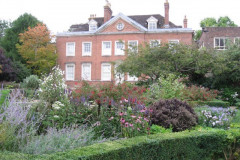
It is found on a 0.25 acres (0.1ha) site, previously a low quality rose garden (see below) which had been vandalised. The garden is between the Georgian Grade II* listed Park House and the converted stables which now houses Kaya, the park cafe.
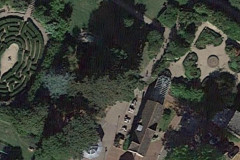 Many wedding parties marry in the registry office in Park House and enjoy the garden which is known informally to locals as “the sensory garden”.
Many wedding parties marry in the registry office in Park House and enjoy the garden which is known informally to locals as “the sensory garden”.
It opened in 1991 and the original Horsham District Council brochure remarks that:
“The objective of the garden is to provide a feature of excellence which can be enjoyed by the less able bodied as well as the general public and complement the adjacent historic buildings.”
This language may not sit well with present day sensiblities because disability rights have improved substantially in the 30 years since this project was started but at the time it was very forward thinking and still succeeds in its original aims.
Sun Alliance (now RSA), a major employer in the town was looking for a project to commemorate 25 years of being in Horsham. They agreed to pay more than 2/3 of the costs if the garden project was changed to take into account the needs of physically disabled people. Sun Alliance also paid the costs of a leading environmental planning and design consultancy and Quantity Surveyors. Other local businesses gave materials free or at substantially reduced prices. Horsham District Council paid the remaining third of the £92,000 cost and agreed to take on responsibility for upkeep of the garden. The design committee included the Horsham Access Committee who made it clear that people with disabilities wanted equal access to the same facilities as their able bodied fellow citizens. RSA have built on this legacy by contributing £5000 to the current restoration project.
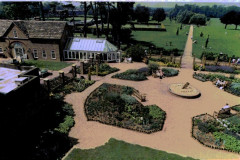
On the 7th January 1990 the first turf was cut. By spring 1991 landscaping and planting were completed. On the 29th June 1991 Park House Garden was opened by the Earl of Snowdon whose mother was one of the Messels of Nymans Gardens. Due to his childhood polio he was a vigorous campaigner to end discrimination against those with disabilities and spoke during the opening ceremony of the difficulties he had had in persuading the Chelsea Flower Show to change their rules and allow the use of wheelchairs and guide dogs in the grounds of the show. He said that Park House Garden was an example to other local authorities and organisations.
Original design in 1991

* The centrepiece of the garden is a sundial called the Sungod; designed by renowned local artist John Skelton. As the sundial is on a round base those with visual impairment can move about safely.
* A simple, fairly formal layout was used to be in keeping with age of house.
* The design included wide axial paths aimed to help those with visual impairment to remember the route more easily and to allow two wheelchairs to pass.
* The beds marked A to J were planted in distinct colour themes such as blues, reds and pinks to the centre.
* A sealed gravel path was used so that it was smooth enough for wheelchairs whilst not being too slippery for visually impaired.
* Wheelchair bays were placed next to benches so that everyone could sit together
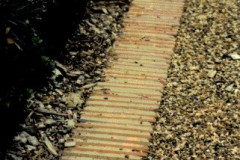
* Many of the paths were edged with tiles to provide tapping strips for those using long tapping canes.
* Short Aberdeen granite columns mark right angle turns.
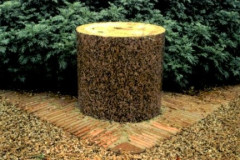
* Entrances/exits on only 2 sides to help those with visual impairments get their bearings.
* Originally over 130 different kinds of plants were used: many of them notable for their scent. The garden was designed to be at its best in summer but interest remained in winter. Although many of the plants have changed over the years this theme remains.
* A Georgian style ornamental fountain was placed in the corner also using stone from the former St Marks Church.
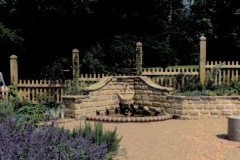
* A Georgian style ornamental fountain was placed in the corner also using stone from the former St Marks Church.
* Waist height wooden fence with hoops of open metal work.
* A raised bed used stone from the recently demolished part of St Marks Church. This bed was at wheelchair height to allow wheelchair users to touch the plants more easily
* No ramps/steps were used and the garden is close to disabled parking bays
Contributors and Contractors
Many local businesses contributed to the garden with their time and resources, often donating materials or giving extra time for free. Tim Bennett Farm & Fencing Services remains a going concern. Redland Bricks which used to own the Graylands Estate at Langhurst Wood contributed special handmade, slightly irregular, facing bricks & half rounded wall copings which had lovely golden shades and a mellow finish. Architectural Garden Design (AGD) carried out all the soft landscaping including buying the plants and planting them.
The original brochure makes special reference to AGD saying:
“The team took the project to heart so that many extras were carried out at no cost and special mention must go to Paul Mort, a local landscape gardener”
Many thanks for pictures and information to Horsham District Council, Mark Baldwin, Members of the Horsham Society with particular reference to Nigel Friswell and Jeremy Knight of Horsham Museum.
2. Gardeners who have helped develop Park House Garden
Over the 30 years since the garden was created, several people have been key to caring for and developing it. No garden design is static. As each plant grows so does the design of a garden, changing and adapting as tastes and budgets change, plants lose their vigour, old varieties die out and new sometimes more pest resistant, varieties are introduced.
Plaque commemorating opening of the garden 30 years ago. Photo by Ian Nicol
Paul Mort
Paul Mort, was one of a team from Architectural Garden Design (AGD) which carried out all the soft landscaping including buying the plants and planting them when the garden was created. The original brochure makes special reference to Paul saying: “The team took the project to heart so that many extras were carried out at no cost and special mention must go to Paul Mort, a local landscape gardener”.
What no one could foresee at that time was that the Park House Garden and Paul Mort’s future would be intimately linked: Paul was one of the main people who continued to look after the garden for many years to come. An expert horticulturalist remembers Paul as: “caring passionately about the garden”. He was “really interesting having a wealth of tales to tell…. a lovely man; a real character. He was really tough and hardworking; dedicated to his work and took real pride in Park House Garden”
What no one could foresee at that time was that the Park House Garden and Paul Mort’s future would be intimately linked: Paul was one of the main people who continued to look after the garden for many years to come. An expert horticulturalist remembers Paul as: “caring passionately about the garden”. He was “really interesting having a wealth of tales to tell…. a lovely man; a real character. He was really tough and hardworking; dedicated to his work and took real pride in Park House Garden”
Cutting the box hedging is a major job!
Some of his toughness probably came from his former life as a jockey and his love of racing influenced his horticulture because he used to schedule some tasks to coincide with major horse racing events – for example; the box hedging was always cut the week of the Cheltenham Gold Cup.
Please remember Paul kindly when you see his bench in the garden which stands as a tribute to a man who nurtured this special place with so much love and care, working well into his 70s.
Please remember Paul kindly when you see his bench in the garden which stands as a tribute to a man who nurtured this special place with so much love and care, working well into his 70s.
Bench in memory of Paul Mort
John Marder
John Marder, a very knowledgeable horticulturalist played a key role in the development of the garden. John fell into horticulture more or less by accident. After doing a series of jobs he gradually realised that being outdoors, working in gardens and close to nature made him happiest so he began his formal qualifications which led, amongst other things, to becoming a lecturer at Brinsbury College.
John remembers that his first task for HDC was to work with Paul on replanting the garden in 2007. They continued to work together for many years. As you sit in Park House Garden have you noticed the glorious tree to the left of Park House? This is John’s favourite; called the Katsura tree and in Autumn it has a glorious smell of burnt sugar.
Lavender and iceberg rose border
Sharon Norman, a former Horticultural Officer for HDC remembers John taking groups of people who had sight difficulties around the garden and describing the plants to them. She also recalls that he replanted the glorious lavender and iceberg rose border which forms a magnificent entry into the garden. Sharon also made a significant contribution to the garden. For example, a keen artist she used her colourist skills to design a ribbon of roses in complimentary colours. She also introduced the alliums which are thriving and are so vital to pollinators. Sharon describes the PHG as being full of birds and people eating their sandwiches and feels that it is very rewarding to have been part of something which gives so much pleasure to so many.
Before retiring, John brought in Mark Baldwin to revive the garden. By February 2019 HDC realised that this special area of the park needed a talented gardener. John said, “As a formally laid out intimate space, it is unique in the park and offers an opportunity for creative horticulture which Mark is truly now making happen”.
Mark Baldwin
Creativity is in Mark’s DNA: formerly a jewellery designer, he decided to change career and follow his passion for gardening by taking formal qualifications in horticulture. His experience has been diverse including Sussex Prairies, a Henfield based company which is part of the new perennials movement and prestigious gardens such as the National Trust’s Woolbeding Gardens.
Mark has sought to create a more welcoming atmosphere by reintroducing the original more open aspect of the garden. Lost plants have been rediscovered whilst clearing neglected areas; old plants have been reinvigorated and plants with scent and colour have replaced lost plants.
The results already achieved, on a very tight budget, have been stunning but Mark isn’t resting on his laurels and has a list of other tasks to tackle. He would also like to reintroduce more of the scented plants that were a particular feature of the Garden in earlier years. What Mark has achieved so far is remarkable and he says that he has been genuinely overwhelmed by people’s positive comments.
Just being in the Garden has a calming effect but Mark says that gardening is therapeutic for everyone. You forget your worries whilst being out exercising in the fresh air. Even if you have a balcony you’d be amazed what you can grow in a small space. The last year has shown that any aid to physical and mental wellbeing is more important than ever. HDC and Friends of Horsham Park can offer lots of opportunities for anyone who wishes to be actively involved with gardening type activities in the Park.
Hannah Neale
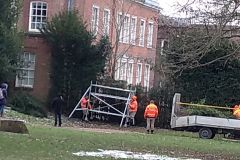 Another key person in the future of the garden is Hannah Neale in her role as Landscape and Horticultural Officer. She has a wealth of experience in horticulture, having trained at Wisley and worked in parks departments since 2004; she joined HDC two weeks before the first lockdown in March 2020.
Another key person in the future of the garden is Hannah Neale in her role as Landscape and Horticultural Officer. She has a wealth of experience in horticulture, having trained at Wisley and worked in parks departments since 2004; she joined HDC two weeks before the first lockdown in March 2020.
The overgrown yew hedge being cut back winter last winter
One of the first changes Hannah implemented was to cut back the overgrown yew hedge and entrance bay trees. Mark had wanted this to be done for some time in order to open up the garden and make it more welcoming for visitors.
Once the yew hedge had been cut back, it was noticeable how the plants on the raised bed had grown forwards to get the light and had outgrown the space.
Hannah, left, talking to Ruth Growney, judge form South and South East in Bloom, about plans for the garden.
The HDC Parks and Countryside Team and the Friends of Horsham Park have worked on a joint project to renew the planting in the raised bed to respond to climate change by planting more drought tolerant plants. Hannah, with input from Mark, has come up with a planting plan and the Friends successfully applied for an HDC climate change grant to fund the work. The bed was cleared by the volunteers but lack of plant availability because of the pandemic, means we will have to wait until the Autumn to see the design planted up. In the meantime, as we’re sure you have noticed, the bed has been planted up with hollyhocks , cosmos and zinnia grown by the volunteers for a summer display.
Many people have requested more year round planting in the garden so Hannah has also redesigned the fountain bed to include winter planting. The Friends have been given a grant by Sussex Garden Trust (SGT) to plant up this bed and would like to thank Virginia Hinze from SGT who has already offered valuable expertise and support for our PHG 30th anniversary project.
Viginia Hinze, Sussex Gardens Trust, talking to Mark Baldwin about the garden and the plans for the raised bed.
All new planting will be pollinator friendly as well as appealing to the senses. Photo by Ian Nicol
3. The Sundial
Centrepiece of the Garden
The sundial is called the Sungod and was designed by the British sculptor and lettercutter, John Skelton. Skelton worked and lived in Streat, near Hassocks and was awarded an MBE for his services to the Arts. For more about the life and work of John Skelton see https://www.johnskeltonsculptorlettercutter.co.uk/
This is what the sundial looked like when it was first installed.

The gnomon is a stylised face with a golden eye. The position of the shadow shows the time – visually and by touch because of the coolness. The brick and tile base is a great favourite with children who immediately climb up and enjoy balancing on the blocks which has both the hours and a Latin motto carved into them.
The blocks on the base of the sundial run clockwise for 15 hours from four in the morning, carved IIII, to VIII in the evening; whilst the Latin Motto, ‘Horas non numero nisis serenas’, runs counter clockwise. Each block has been carved with numbers on the top and letters on the side so that the visually impaired can tell the time and feel the Latin inscription. Skelton is renowned for his innovative forms in lettercutting.
The base also carries a metal plate, overlooked by many people, which has the name of the sculpture, the sculptor’s name and the translation of the Latin motto. “I COUNT NOT THE HOURS UNLESS THEY BE HAPPY”
The motto
This motto and the garden inspired the winning adult poem in our Year of Culture 2019 poetry competition. As you read it, imagine the poet sitting here with a friend surrounded by the flowers.
HORAS NON NUMERO NISI SERENAS
Well, that would be a very simple thing to do
If, like Freud, you could discard the pain
Of memories sad, taking the optimistic view,
And only see the happier times again.
Be that as it may, we lived a pleasant hour
Among the lavenders and thyme and sage
And pretty things that late in Summer flower;
And for a time we forgot the weight of age
And talked of happier things and moments droll
Snatched from a past that cannot change,
For which even Nature cannot charge a toll,
Discussing things both rich and wondrous strange.
What earthly pleasure is there quite so sweet
As gentle friends conversing on a seat?
Maurice Packham
Winner – Adult Competition
The poem can be seen at Poets’ Corner next to the garden.
Need for restoration
By 2020 the sundial was in need of restoration. Not only was the golden eye missing, but the top of the head had broken away, leaving two jagged metal pins. The lettering had faded too.
In October 2020 the Friends met with Skelton’s daughter, Helen Mary Skleton. She suggested that the gnomon could be reshaped by a sculptor colleague, Alyosha Moeran, and she could refresh the lettering by cleaning and painting.
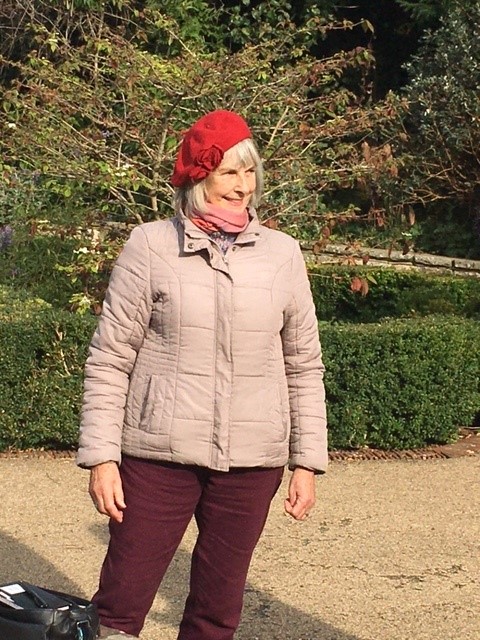
Helen Mary visiting the garden October 2000
Helen Mary was trained by her father and after completing a three year apprenticeship with him in 1976, she worked alongside him in his workshops at Streat. In October 1996 she completed the City and Guilds teaching certificate and runs lettercutting courses at John Skelton’s workshops in Streat. For more information see https://www.skeltonworkshops.co.uk/about-us . Her current work consists of commissioned memorials, plaques for buildings and sundials for public and private spaces. She also enjoys carving poems on slate.
We were delighted that Helen Mary was interested in restoring her father’s work and so we set about fundraising. We applied to RSA, who had been so generous when the garden was created and were stunned that they not only provided the money for the restoration but topped this up to a grant of £5000. This got us thinking more widely about restoring the garden and kick-started our ‘Sense the Change’ project – we have now raised £12000 for the garden.
The restoration
The restoration started with the reshaping of the head by sculptor Alyosha Moeran. Alyosha trained as a stonemason and then as a stone carver at the City and Guilds London School of Art. He has been working professionally as a stone carver and sculptor for 25 years and has undertaken a variety of Public and private commissions. Some of his past work can be seen on his website http://alyoshastone.com/ and there is a video of a beautiful Singing stone: http://alyoshastone.com/new-gallery
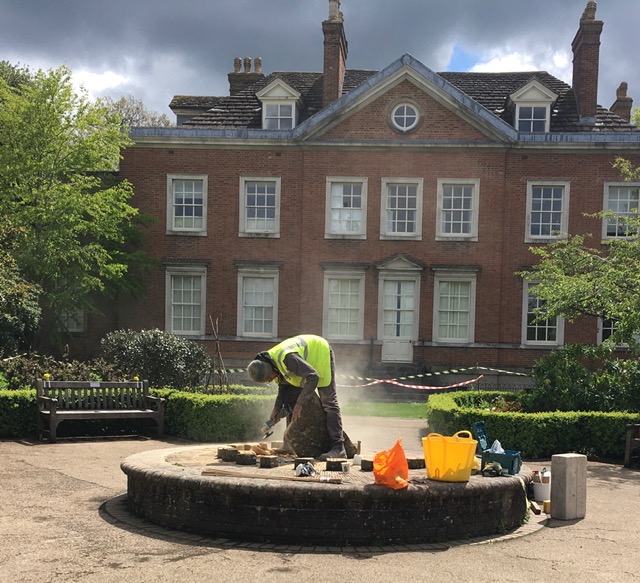
Alyosha smoothing off the broken stone and jagged metal pins.

Alyosha carved out a new golden eye.
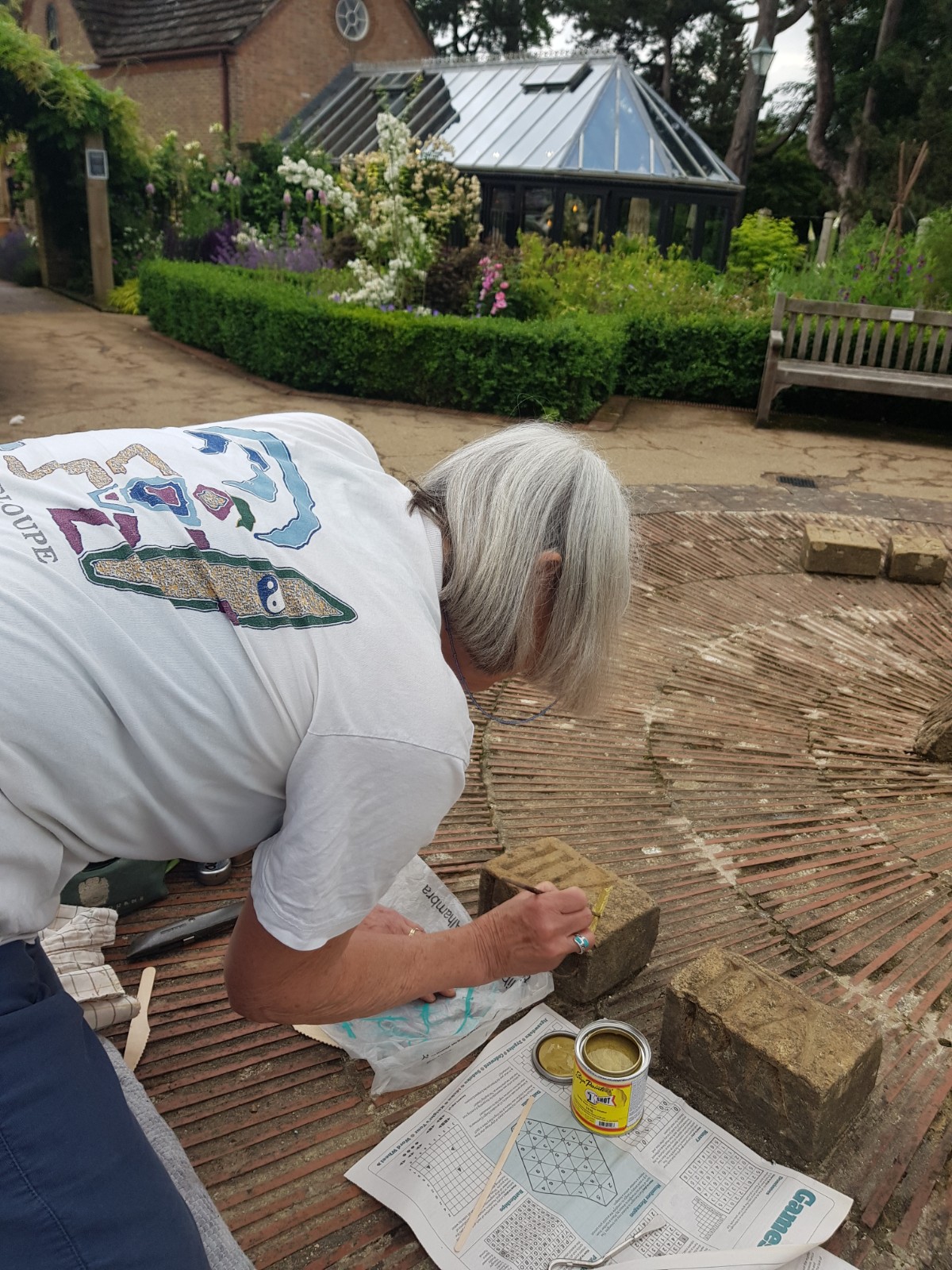
Next Helen Mary carefully cleaned out the lettering and then painted the numerals in gold and the motto in black.
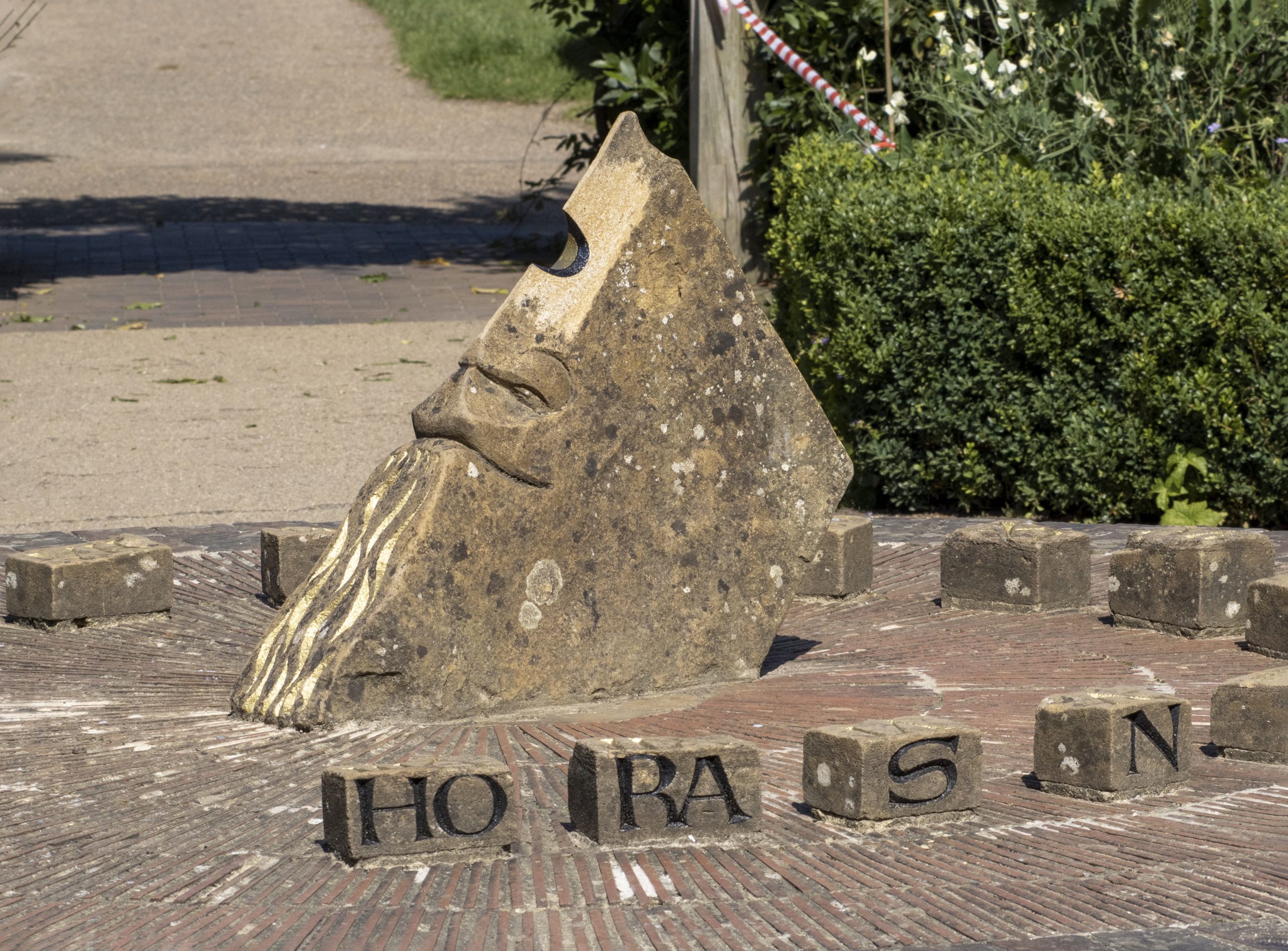
Finally, Helen Mary painted the eye carved by Alyosha and highlighted the beard. The sundial is once again an attractive centrepiece to the garden. Finished sundial photographed by Ian Nicol.
4. The Garden and Wildlife
Birdlife in Park House Garden is varied and delightful. Frequent visitors include wrens, robins, greenfinches, gold finches, dunnocks, sparrows, blackbirds, pigeons and thrushes. A family of blackcaps made their home in the Garden, whilst great spotted woodpeckers have regularly been seen flying at speed through the garden between their nest and where they collect their food.
This is a great area for pollinators. Clever planting including lupins, echinachea, roses, peonies, and alliums provide excellent food sources for a wide variety of bees, butterflies and moths from early in the season right through the summer.This summer bees have enjoyed the cosmos and zinnias we planted in the raised and fountain beds.
A delightful hummingbird hawk-moth has been sighted.
These beds will be replanted with shrubs and bulbs which have been selected to have sensory interest but also to support wildlife.
Many other pollinators and insects can be seen in the garden:
Less welcome wildlife!
It can be disappointing to sit in the garden and spot a rat dart across the path in broad daylight. The Council is working hard to get on top of the rat population that has increased significantly recently, but their efforts are undermined by the kind intentions of visitors feeding the birds. Unfortunately, this food is helping the rat population to flourish. The rats hoover up any food left for the birds before the birds get a look-in. So a plea: please don’t feed the rats! There is plenty of other natural food available for the birds in the park.
Send us your photos – let’s record the wildlife in the Park
We love the wildlife photos Ian has been taking for us this year. Do you have a wildlife photo to share? If you have managed to snap a photo of wildlife in the garden or in the Park, please send us a copy at [email protected]
so we can share in our newsletter and because we are trying to build up a record of flora and fauna in the Park.
